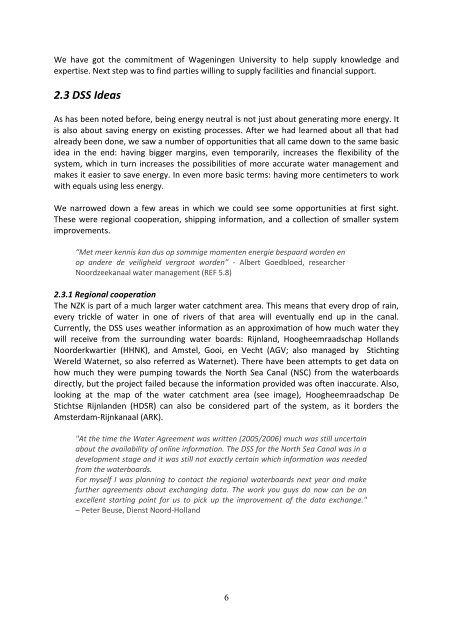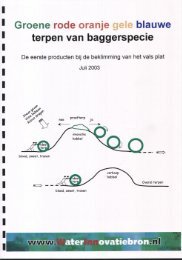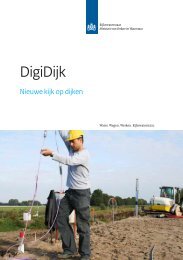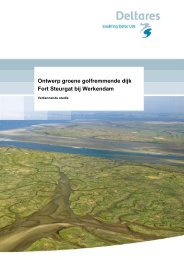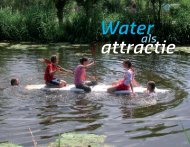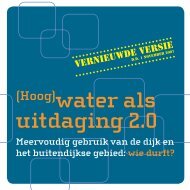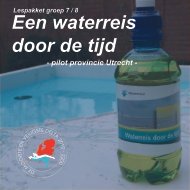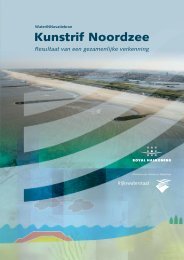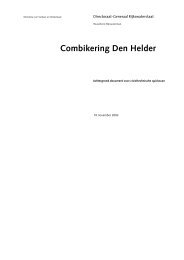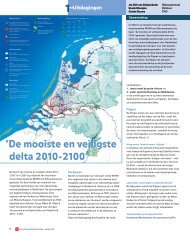Creating opportunities to adapt to climate change through innovative ...
Creating opportunities to adapt to climate change through innovative ...
Creating opportunities to adapt to climate change through innovative ...
You also want an ePaper? Increase the reach of your titles
YUMPU automatically turns print PDFs into web optimized ePapers that Google loves.
We have got the commitment of Wageningen University <strong>to</strong> help supply knowledge andexpertise. Next step was <strong>to</strong> find parties willing <strong>to</strong> supply facilities and financial support.2.3 DSS IdeasAs has been noted before, being energy neutral is not just about generating more energy. Itis also about saving energy on existing processes. After we had learned about all that hadalready been done, we saw a number of <strong>opportunities</strong> that all came down <strong>to</strong> the same basicidea in the end: having bigger margins, even temporarily, increases the flexibility of thesystem, which in turn increases the possibilities of more accurate water management andmakes it easier <strong>to</strong> save energy. In even more basic terms: having more centimeters <strong>to</strong> workwith equals using less energy.We narrowed down a few areas in which we could see some <strong>opportunities</strong> at first sight.These were regional cooperation, shipping information, and a collection of smaller systemimprovements.“Met meer kennis kan dus op sommige momenten energie bespaard worden enop andere de veiligheid vergroot worden” - Albert Goedbloed, researcherNoordzeekanaal water management (REF 5.8)2.3.1 Regional cooperationThe NZK is part of a much larger water catchment area. This means that every drop of rain,every trickle of water in one of rivers of that area will eventually end up in the canal.Currently, the DSS uses weather information as an approximation of how much water theywill receive from the surrounding water boards: Rijnland, Hoogheemraadschap HollandsNoorderkwartier (HHNK), and Amstel, Gooi, en Vecht (AGV; also managed by StichtingWereld Waternet, so also referred as Waternet). There have been attempts <strong>to</strong> get data onhow much they were pumping <strong>to</strong>wards the North Sea Canal (NSC) from the waterboardsdirectly, but the project failed because the information provided was often inaccurate. Also,looking at the map of the water catchment area (see image), Hoogheemraadschap DeStichtse Rijnlanden (HDSR) can also be considered part of the system, as it borders theAmsterdam-Rijnkanaal (ARK)."At the time the Water Agreement was written (2005/2006) much was still uncertainabout the availability of online information. The DSS for the North Sea Canal was in adevelopment stage and it was still not exactly certain which information was neededfrom the waterboards.For myself I was planning <strong>to</strong> contact the regional waterboards next year and makefurther agreements about exchanging data. The work you guys do now can be anexcellent starting point for us <strong>to</strong> pick up the improvement of the data ex<strong>change</strong>."– Peter Beuse, Dienst Noord-Holland6


